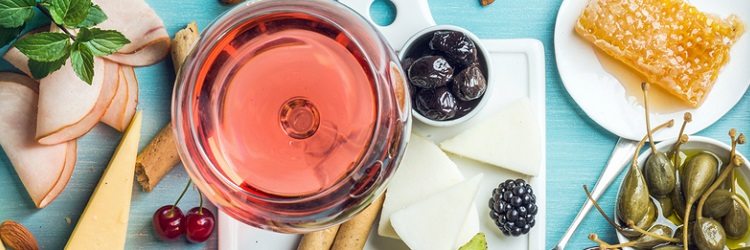Craft & Cork >> Wine

The best of both worlds
Pinot Noir is a grape varietal that has risen to great prominence on the international wine stage in recent years, and is now treasured by winemakers and wine lovers across the world. In its native France, it is actually an ancient variety, which has been cultivated since the 4th century AD. French winemakers still use it to make the prized reds of Burgundy and the famed “blanc de noirs” of Champagne.

Unlike its Burgundian cousin, Chardonnay, which has thrived in vineyards around the world, Pinot Noir has proven to be a challenge for determined viticulturists and winemakers who strive to replicate its success in vineyards outside of France. Pinot Noir demands very specific conditions to flourish, some of which are a relatively cool climate and limestone soils. It is highly prone to a number of vineyard diseases. Another struggle with this vine can be due to its typical early budding; spring frosts spell disaster for this impatient grape.
Under the care of skilled hands in the vineyard and watchful eyes in the winery, Pinot Noir is now creating elegant wines in several wine regions of the world. One country that is relatively new to growing and vinifying Pinot Noir is Chile. In examining Chile’s unique geography, it is no surprise that Chilean Pinot Noirs have become amongst the worlds’ best. With vineyards located at high elevations in the Andes Mountains, Chile possesses the cool climate sites that offer the precise conditions required for this delicate variety to thrive.
 Chilean winemakers who have embraced this grape are experiencing great success with different styles of wine, including one of the latest wine trends – fruity, but dry, rosés. Pinot Noir rosés have become more sought after in recent years because they offer the best of both worlds. These rosés combine the light, crisp and refreshing character of a white wine with the finesse and complexity found in a Pinot Noir red wine. No longer is rosé considered to only be suitable for drinking during the summer months. Wine lovers are discovering that its versatility for pairing with a variety of lighter and heartier foods make it a great selection year-round.
Chilean winemakers who have embraced this grape are experiencing great success with different styles of wine, including one of the latest wine trends – fruity, but dry, rosés. Pinot Noir rosés have become more sought after in recent years because they offer the best of both worlds. These rosés combine the light, crisp and refreshing character of a white wine with the finesse and complexity found in a Pinot Noir red wine. No longer is rosé considered to only be suitable for drinking during the summer months. Wine lovers are discovering that its versatility for pairing with a variety of lighter and heartier foods make it a great selection year-round.
In Chile, you would find the Pinot Noir Rosé accompanying one of the country’s most beloved chicken dishes, served in all seasons, but especially in the cooler months of July through September. We think that when this traditional Chilean everyday dish is prepared with our new En Primeur Winery Series Chile Pinot Noir Rosé, it is simply delicious. And it tastes even better when served with a full glass of rosé on the side.
Pollo Arvejado
Yield: Serves 4-6.
| 1 whole chicken cut into 6 or 8 pieces
2 tablespoons olive oil 2 tablespoons butter 1 medium onion, chopped 2 cloves garlic, minced 3 celery stalks, chopped 1 teaspoon cumin |
1 teaspoon paprika
1/2 teaspoon oregano 3-4 tablespoons flour 1 cup En Primeur Winery Series Chile Pinot Noir Rosé 1-2 cups chicken broth 1 16-ounce (454 gram) bag frozen peas and carrots |
 Dredge chicken pieces in flour, and season with salt and pepper. Set aside.
Dredge chicken pieces in flour, and season with salt and pepper. Set aside.- Melt the butter and oil in a deep, large heavy skillet and sauté the onions and garlic until soft and fragrant. Add the celery, cumin, paprika and oregano and sauté 2-3 more minutes.
- Add the chicken pieces and sauté until browned on both sides.
- Add the wine and scrape bottom to deglaze the pan. Add enough chicken stock to almost cover the chicken. Add the peas and carrots and stir. Cover and simmer chicken for about 10 minutes.
- Serve overSouth American-style rice, or with potatoes.


Recent Comments